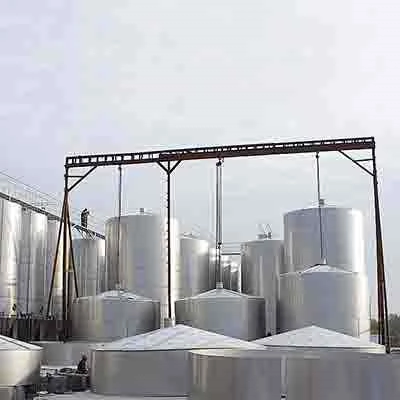For steels used for cryogenic pressure vessels, increasing the carbon content will increase the brittleness of the material and the brittle transition temperature. Therefore, the carbon content of low-temperature steel should not exceed 0.2%. In recent years, there has been a development and application trend that uses low carbon (< 0.15 %) or micro carbon (< 0.06 %) steel.
Manganese is an element that enlarges the austenite region. The increase in manganese content enables the steel to obtain fine and tough ferrite and pearlite grains, thereby improving the toughness of the steel at low temperatures. When the carbon content is constant, increasing the manganese-iron ratio can result in low nil-ductile transition temperature. When the carbon content is lowered and the manganese-carbon ration is increased, the nil-ductile transition temperature decreased and the allowable use temperature of the steel sheet is lowered.
Nickel is also an important element to improve the low-temperature toughness of steel, even better than manganese. When nickel content is 3.5%, steel can maintain high toughness at -100 °C, while steel containing 9% nickel can be resistant to low temperatures of -196 °C and used as a container for liquid nitrogen.
3. Grain size
Grain size is another factor that can largely affect the low-stress brittle fracture of steel. Fine grain not only makes the metal have higher fracture strength, but also lowers the brittle transition temperature. This is due to the presence of impurities and brittle phases in the grain boundary, which is often the cause of cracks.
Grain refinement, on the one hand, makes the brittle phase per unit area relatively reduced, the surface energy increases, the probability of crack and its expansion decreases, thereby improving the low-temperature resistance of steel to brittle fracture. On the other hand, the performance of fine grain steel is relatively uniform, which reduces the brittle transition temperature.
4. Inclusions
Phosphorus is prone to grain boundary segregation, and oxygen in steel precipitates at grain boundaries in the form of various oxides, both of which greatly increase the brittle transition temperature of steel, resulting in low-stress brittle fracture. Therefore, low-temperature steel must be fully deoxidized. For example, the low-temperature toughness of killed steel is better than that of boiling steel, if silicon and aluminum, or aluminum and titanium (vanadium, niobium) are used for deoxidation, the grain can be further refined, and its low-temperature toughness is better.
Sufficient deoxidation can not only effectively reduce the content of oxygen, sulfur, phosphorus and other gases, but also spheroidize inclusions, reduce the accumulation of dislocations, and thus reduce the brittle transition temperature of steel.
Tests have shown that the low-temperature brittleness of very pure metals is independent of the grain type. For example, pure iron without carbon, nitrogen, oxygen, or boron is plasticizable even at a low temperature of 4K. However, impurities (especially the brittle phase of the grain boundary) have a great influence on the low-stress brittle fracture. A small amount of carbon, oxygen and nitrogen in the iron-chromium alloy with 25% Cr, for instance, is an important reason for causing the low-stress brittle fracture.
5. Heat treatment
Heat treatment has a great influence on the low-stress brittle fracture of steel. Quenching and tempering are common methods for obtaining ferrite and granular carbide structures, which can significantly improve the low-temperature toughness of steel. However, as the tempering temperature rises during the quenching and tempering treatment, the aggregation of the granulated carbides adversely affects the low-temperature toughness, so the tempering temperature during the tempering treatment should be strictly controlled.
Normalizing is the most common heat treatment method for low-temperature steel. If the alloying elements in the steel increase, the normalizing temperature should be increased accordingly. The annealed structure of the steel is coarser than the normalized structure, and its low-temperature toughness is far worse than that of the normalized or quenched and tempered treatment. Therefore, the steel for the cryogenic pressure vessel is not annealed. In the case of a cryogenic pressure vessel and its pressurized components that require post-weld heat treatment, the temperature of the post-weld heat treatment should not exceed the tempering temperature of the steel under any circumstances.
The heat treatment also inhibits the precipitation of the brittle phase from the grain boundary, changes the morphology, size, quantity, distribution of the precipitated phase, uniform structure, and improves the strength and low-temperature toughness of the steel. A certain amount of retained austenite or ferrite in the tempered structure (tempered martensite) can effectively prevent crack expansion.


 English
English Español
Español русский
русский